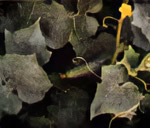Cucumber
- Most cucumbers mature in about 65 days. They grow on a vigorous bush with 2-inch (5 cm) triangular leaves. Each blossom produces a vegetable that can be eaten raw or pickled.
- The Arkansas Little Leaf variety matures in 62 days and is great for big, juicy pickles.
- Make sure the soil is warm and all danger of frost has passed, usually around June 10, before planting; otherwise, the seeds will rot in the soil.
- Plant the seeds in rows and thin the seedlings to 6 inches (15 cm) apart.
- Once well-established, the plant will tolerate a wide range of weather conditions.
- If you need to save space in your garden, train the plants to grow up a trellis.
- Alternatively, you can plant seeds in hills.
- Once each seedling has 6 leaves, thin the hill to just 4 seedlings.

- Don't allow cucumbers to become overripe, or the vines will stop producing more cucumbers.
- If your garden was part of the lawn the year before, you may need to watch for cutworms and treat your garden for them.
- If you spray with any type of fertilizer, be sure to WASH and PEEL any cucumbers you eat raw.
Fascinating Facts!
- Cucumbers are actually a fruit, not a vegetable! They belong to the same family as pumpkins, zucchinis, and watermelons.
- The world's heaviest cucumber was grown in the UK in 2015, and weighed a whopping 23 kg (50.8 lbs)!
- Cucumbers are about 96% water, which makes them a great hydrating snack on hot days.
- The longest cucumber ever recorded was grown in the US in 2011, and measured 1.09 meters (3 feet 7 inches) long!
- Cucumbers were first cultivated over 3000 years ago in ancient India, where they were used for both food and medicinal purposes.
- If left to grow, cucumbers can turn yellow and become very bitter, so it's important to harvest them when they're still green.
- Cucumbers are low in calories but high in vitamin K, vitamin C, and potassium, which are all important nutrients for a healthy body.
more veggies
caring
|





